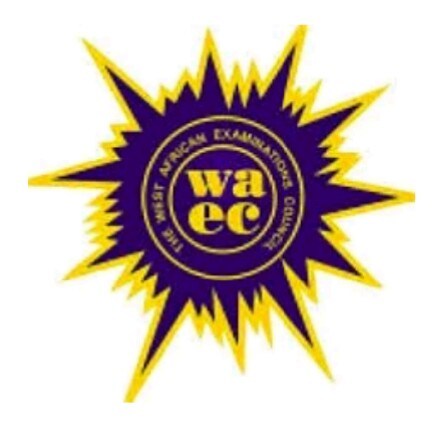Studying Leather Work is an essential component of the West African Examination Council (WAEC) syllabus for students interested in pursuing Visual Arts.
This course focuses on the art of tanning animal hides and skins to produce various leather articles like footwear, receptacles, and other leather crafts.
List of Topics Covered in WAEC Syllabus for Leather Work 2024/2025
In this blog post, we will explore the aims and objectives of the Leather Work syllabus, the exam format, and the topics covered.
Understanding the significance of Leather Work in exam preparation will guide students towards productive studying and help them achieve their academic goals.
Aims and Objectives
The Leather Work examination syllabus aims to assess students’ knowledge and skills in various aspects of leatherwork. The objectives include:
- Testing theoretical knowledge and practical application of leatherwork concepts.
- Assessing proficiency in using, caring for, and maintaining leatherwork tools and materials.
- Evaluating competence in different leatherwork techniques.
- Testing students’ ability to handle both natural and synthetic leathers.
- Examining knowledge of costing, pricing, and marketing leatherwork products.
- Assessing awareness of career opportunities and entrepreneurial development in the leatherwork industry.
- Evaluating students’ ability to appreciate and interpret leatherworks.
Scheme of Examination
The Leather Work examination consists of three papers: Papers 1, 2, and 3, all of which are mandatory.
Paper 1: This section comprises forty multiple-choice objective questions to be answered within 50 minutes, carrying 40 marks.
Paper 2: Students are required to answer four out of six essay-type questions within 2 hours, accounting for 60 marks.
Paper 3: In this practical project section, candidates choose and execute one project within five days, working six hours each day. The paper carries 80 marks. Candidates receive the project questions two weeks in advance for study and must prepare designing sketches and notes, which contribute 20 marks to the final score.
WAEC Leather Work Syllabus
The Leather Work syllabus covers both theory and practical sessions. It encompasses the following topics:
- Introduction to Leather Work:
- Definition and history of leatherwork.
- Rationale for studying leatherwork.
- Clarification of leather uses.
- Leathers and their Use:
- Characteristics, types, and structure of leather.
- Chemical composition, source, and preparation of leathers.
- Other leather materials, including synthetics and offcuts.
- Various uses of leather in containers, body items, household items, etc.
- Materials, Tools, and Equipment:
- Definition, types, and uses of materials.
- Sources, preparation, care, repair, and maintenance of tools and equipment.
- Classification and Uses of Leather:
- Different types of hides, skins, and kips.
- Industrial, footwear, and fancy goods applications.
- Career Opportunities in Leather Work:
- Leather production (tanning).
- Leather technologist, art/decoration/restoration.
- Leather product dealer, tutor, and designer.
- Dealing in leather accessories, equipment, and tools.
- Leather upholstery and designing and producing leather items.
- Designing:
- Definition, elements, and principles of design.
- Design environment and process.
- Computer-aided designing and preliminary design.
- Production of Leather Articles:
- Classification of leatherwork.
- Making models, decorative techniques, production techniques, and finishing techniques.
- Care, maintenance, and packaging of leather articles.
- Exhibition of Products:
- Meaning, types, and importance of exhibitions.
- Planning and preparation for exhibitions, including mounting.
- Terminologies in Leather Work:
- Current developments in leatherwork.
- Entrepreneurship Skills:
- Areas of enterprise in leatherwork.
- Exploring, siting, and managing a leatherwork business.
- Avenues for financial and technical support.
- Costing, pricing, and marketing strategies.
FAQs
What topics are covered in the WAEC Leather Work syllabus for 2024/2025?
The WAEC Leather Work syllabus for 2024/2025 covers several key topics including:
- Types of leather and their characteristics
- Tools and equipment used in leather work
- Leather craft techniques (cutting, stitching, and finishing)
- Design and decoration of leather products
- Leather preservation and storage methods
- Production of various leather goods like belts, bags, and footwear.
Students are expected to understand both theoretical concepts and practical applications related to these topics.
How can I access the WAEC Leather Work syllabus for 2024/2025?
You can access the WAEC Leather Work syllabus for 2024/2025 through the official WAEC website (www.waeconline.org.ng) or by visiting your school’s exam office. Some schools also provide the syllabus to students directly. Additionally, WAEC-approved textbooks for Leather Work often contain relevant sections of the syllabus.
What is the exam structure for WAEC Leather Work in 2024/2025?
The WAEC Leather Work exam consists of two main components:
- Paper 1 (Objective Test): Multiple-choice questions covering key theoretical aspects of leather work.
- Paper 2 (Essay & Practical Test): This includes structured essay questions, requiring detailed written answers, and practical tasks where students demonstrate their skills in leather cutting, stitching, and decoration.
Conclusion
Studying the Leather Work syllabus is crucial for students preparing for WAEC exams in Visual Arts.
It equips them with the necessary knowledge and skills to excel in the theory and practical aspects of leatherwork.
By understanding the aims and objectives, exam format, and topics covered in the syllabus, students can efficiently plan their study routines and make the most of their exam preparations.
Remember, the Leather Work syllabus is like an agricultural tool for a farmer—it ensures productivity and success in the exam.






